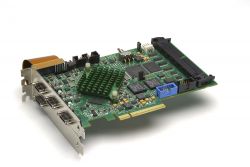Robotics firm GreyOrange raises $30 million, to expand overseas
Foxconn Seeks Manufacturing Sites in India
Myth Busting: Greater Manufacturing Automation Doesn't Mean Fewer Jobs
Chinese factory replaces 90% of humans with robots, production soars
How to Prepare Now for the Industrial Internet of Things
Waterjet Cutting and OCTOPUZ a Powerful Combination
Industry 4.0 Ready: Vacuum Solutions for the Intelligent Factory
How Does the Accident in Germany Affect Industrial Robot Safety?
China's Hunger for Robots Marks Significant Shift
Echoing Government's Productivity 4.0, IoT Automation Boosts Taiwan's Competitiveness
Could This Machine Push 3-D Printing into the Manufacturing Big Leagues?
Widespread backing for UK robotics network
Vision Guided Robotics Advances
Optimizing Barcode Reading and Inspection Capability for the Life of Your System
Rockwell brings factory-automation tools to smartphones, tablets
Records 976 to 990 of 1095
First | Previous | Next | Last
Factory Automation - Featured Product

